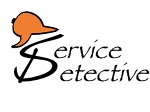Projects
SOA4ALL

Contact: Dr. Tomas Vitvar
The emerging generation starts by abstracting from software and sees all resources as services in a service-oriented architecture (SOA). In a world of services, it is the service that counts for a customer and not the software or hardware components which implement the service. Service-oriented architectures are rapidly becoming the dominant computing paradigm. However, current SOA solutions are still restricted in their application context to being in-house solutions of companies. A service Web will have billions of services. While service orientation is widely acknowledged for its potential to revolutionize the world of computing by abstracting from the underlying hardware and software layers, its success depends on resolving a number of fundamental challenges that SOA does not address today. SOA4All will help to realize a world where billions of parties are exposing and consuming services via advanced Web technology.
The outcome of the project will be a comprehensive framework and infrastructure that ntegrates four complimentary and revolutionary technical advances into a coherent and domain independent service delivery platform:
- Web principles and technology as the underlying infrastructure for the integration of services at a world wide scale.
- Web 2.0 as a means to structure human-machine cooperation in an efficient and cost-effective manner.
- Semantic Web technology as a means to abstract from syntax to semantics as
required for meaningful service discovery.
- Context management as a way to process in a machine understandable way user needs that facilitates the customization of existing services for the needs of users.
SOA4All will significantly impact the competitiveness of the European Software
and IT Services industry and more widely to address the Lisbon goals. For that purpose SOA4All will use the support of the NESSI constituency and will contribute significantly to the NESSI Open Framework, which is one of the main challenges of the European Platform on Software and Services. It has a consortium of 16 partners and led by Atos Origin.
SemanticGov

Contact: Dr. Tomas Vitvar
SHAPE

Contact: Dr. Tomas Vitvar
The objective of SHAPE is to support the development and the realization ofenterprise systems based on Semantically-enabled Heterogeneous Architectures(SHA). SHA extends service-oriented architecture (SOA) with semantics andheterogeneous infrastructures (Web services, agents, Semantic Web Services,P2P and grid) under a unified service-oriented approach. SHAPE will develop a model-driven engineering (MDE) tool-supportedmethodology. SHAPE will take an active role in the standardization ofmetamodels and languages for SHA. The technical results will be compliantwith the proposed standards to ensure high industry acceptance. In current SOA approaches, business requirements and technical details areintertwined constraining the evolution of service-oriented businesssolutions. SHAPE will provide metamodels and languages, methods and tools toseparate the different viewpoints of SOA for the development ofsemantically-enabled, flexible and adaptive business services on a rich SHAinfrastructure.
ServiceDetective

Contact: Nathalie Steinmetz
The discovery of Web Services is essential for creating and utilizing dynamically created applications. Current technologies provide means to describe services on a syntactical level, thus providing only limited automation support. For efficient service discovery, a good characterization of functional and non-functional properties is though essential.
Former research projects have emphasized the role of semantics in service discovery and have focused on how to build and reason over formal semantic service descriptions. Semantic descriptions increase the accuracy of service discovery, however the availability of semantic service description respectively their creation constitutes a severe bottleneck. The availability of trained experts and the costs involved do not allow current approaches to scale up with the existing number of services in the Web. The Service-Detective project will take existing semantic description methodologies and focus on how they can be combined with Web principles in order to scale in a Web context.
The aim of the Service-Detective project is to make Web Services available to potential consumers in a similar way as static Web documents are made available to users by current state-of-the-art search engines. The project will deliver a search engine that will crawl the Web for services and that will thus not be limited to explicitly published services. The crawler will identify Web Service descriptions and gather related information about the services. All available information will be analyzed and added to a cohesive semantic model. On top of this semantic model reasoners can perform inferences in order to provide meaningful ranking and clustering of information. In particular Service-Detective will focus on integrating dynamic aspects of the service requesters and on building meaningful clusters of services.
Service-Detective aims at exploiting both the structure and the semantics of Web Service descriptions in order to find a balance between complex semantic query languages and keyword based approaches.


